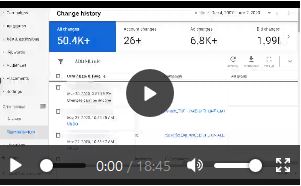
Earlier this year, Google rolled out a significant change to how search ads are displayed for desktop browsers. The removal of sidebar ads from desktop search results has many advertisers wondering if their AdWords campaigns will be negatively affected moving forward. Here’s what you need to know about what has changed for desktop search ads, how it might impact your PPC results, and what you can do to future-proof your AdWords campaigns.
Table of Contents
Streamlining Google Search Ad Results
In short, Google has removed sidebar ads for search. For desktop browsers, the positions above organic search results will be the only ads that will display for searches. The one exception will be PLA (product list ads) boxes, which will still appear on the sidebar of search results. For most searches, Google will continue to limit the results shown to three ads. However, up to four ads can be shown for some “highly commercial” categories. While what exactly “highly commercial” categories includes has not been defined by Google, it seems that categories that tend to have high-cost, competitive keywords, including insurance, law and travel will be included.
Why Did Google Remove Sidebar Ads?
Google is always very responsive to how people use their products, as we saw with the recent introduction of a redesigned AdWords dashboard. But while the AdWords interface update was focused on advertisers, this update seems to be for the benefit of both consumers and advertisers. Matt Lawson, the director of Performance Ads Marketing at Google, explained the logic behind the change in a recent article for Search Engine Land:
“Over time, we’ve found that text ads on the right rail were simply less useful than we’d hoped. In direct terms, users didn’t click on them as much as other ads — and when users don’t click on things, we take that to mean that something wasn’t what they were looking for.”
Sidebar ads (referred to as “right rail” above) on Google search results look and feel more like ads than those that appear in-line with organic search results. By refining how ads are displayed to provide a more “native” advertising experience, it appears that Google wants to keep consumers from feeling like they are being barraged with too many ads while providing a more effective advertising environment for AdWords users.
This change has not been entirely unexpected. Google has been testing variations of how search results are displayed since at least 2001, including adding a fourth ad position above organic search results. With a strong focus on improving usability and implementing Material Design, advertisers and consumers alike should expect to see periodic changes to Google’s interface from time to time.
What Removing Sidebar Ads Means for Your Campaigns
The overall impact of removing sidebar ads is hard to gauge this early on. Advertisers are likely to see a decline in overall impressions since ads will not be served at all on sidebar results anymore. More importantly, Google has essentially throttled supply for a high-demand advertising outlet. As a result, it’s possible that CPC for high-demand keywords may rise significantly. This might be especially relevant for businesses in highly competitive PPC spaces, including law firms and insurance providers.
However, some PPC experts have predicted that with a smaller, more focused offering of ads displayed for any given search, advertisers may see better results overall. If you’re already doing a good job of targeting and serving ads to the right audience, you’ll be rewarded with less competition on-page from other advertisers. That could potentially lead to higher CTR and conversion rates.
The good news is that if you’re already aiming for the top three positions, the change isn’t likely to negatively affect your campaigns significantly — at least not immediately. Since CTRs can decrease significantly for ads in any spot lower than the top three positions, it’s estimated that less than 15% of total click volume on PPC ads will be affected by the change. If your ad position strategy doesn’t involve working towards the top three ad positions, the removal of sidebar ads has made changing your strategy moving forward absolutely critical. Making simple changes such as bumping up your budget for particular keywords and working to improve your Quality Score can help you boost your position.

Need Google Ads Management Help?
Free Google Ads account review for
qualified clients
Almost 20 years experience
Future-Proofing Your PPC Campaigns
With this change, as with all others, you’ll want to keep a close eye on your campaign metrics for any sudden changes. Watch your budget, your conversion rate, and your click-through rate carefully. You may find that increased competition will require you to increase your bids for certain campaigns in order to continue serving ads effectively. Alternatively, if you notice that your ads are performing better for certain keywords than others, you may want to focus more resources on those campaigns.
If you start seeing a negative impact on your campaigns, it may be time to revisit your PPC strategy. Webrageous advocates for constantly A/B testing ad copy, placement, and bidding strategy regularly to continually improve campaign performance. Making changes such as implementing extensions or moving more of your budget to call-only campaigns can be effective methods of increasing conversion rate.
Leveraging Webrageous for Better Results in a Competitive Landscape
Working with a PPC consultant with a strong track record of managing high-performing ad campaigns can help you adjust to Google’s new ad display changes. We can prevent this change (and future ones) from tearing down your campaigns. At Webrageous, we specialize in managing campaigns for clients in the legal industry and know how to effectively navigate the highly-competitive legal PPC space.
Webrageous has an experienced team of dedicated PPC managers who oversee multiple accounts. We can leverage our experience managing the changes that Google has introduced to ensure that your campaigns will continue to thrive. Learn more about the results Webrageous delivers our clients to see how we can help you move your PPC strategy to the next level.
Image Source: Picography via Pixabay



















